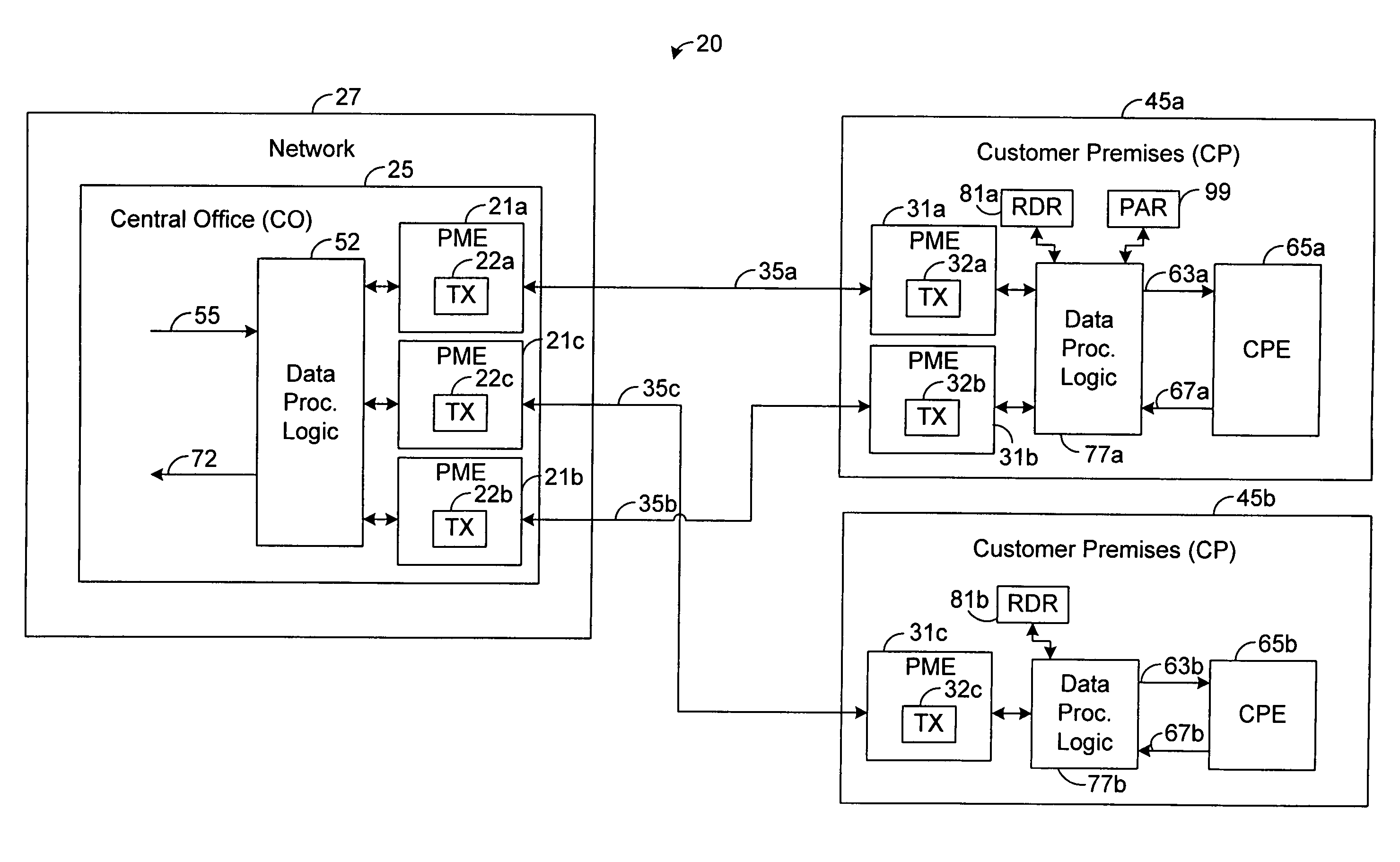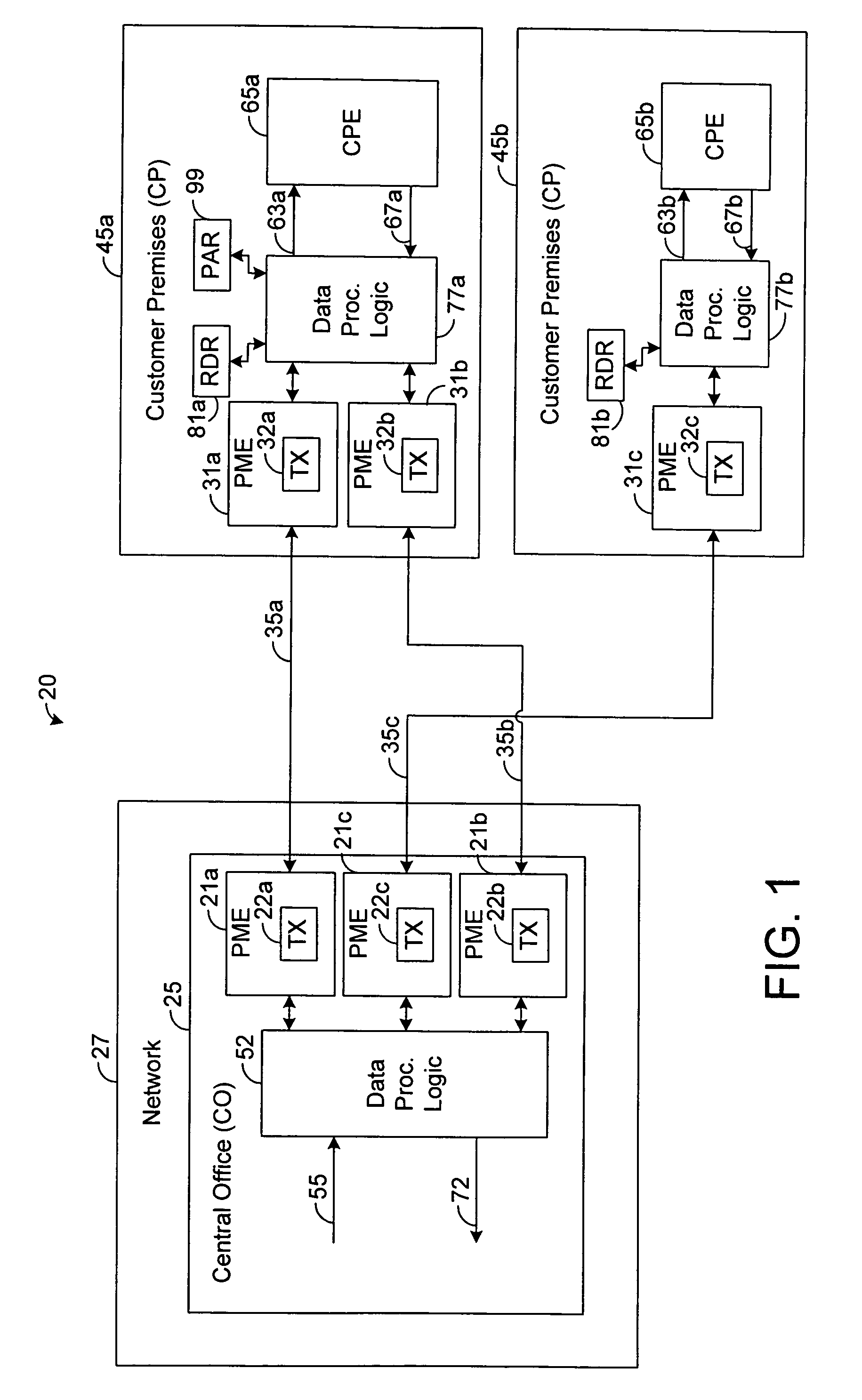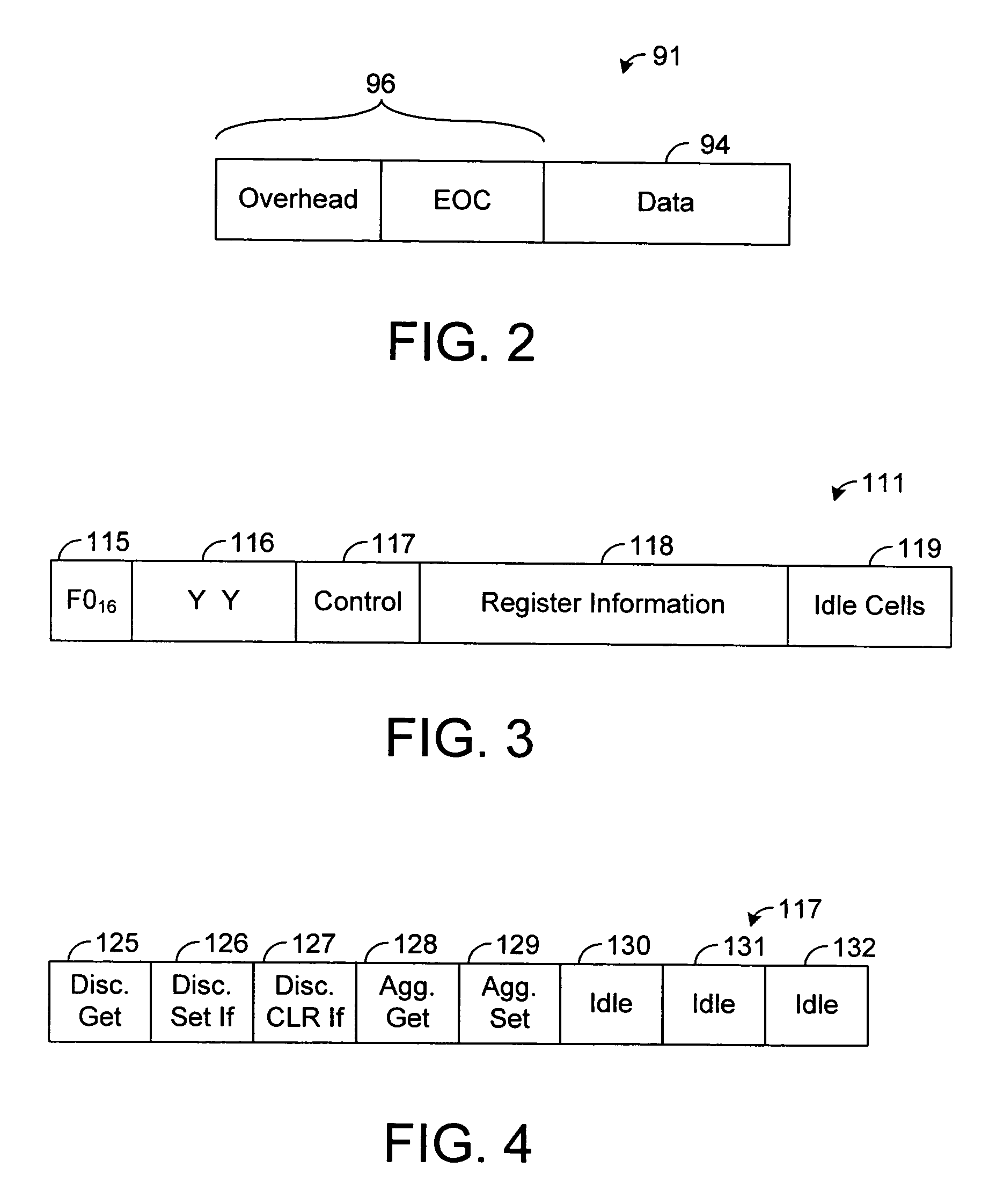Systems and methods for discovering PME bonding groups
a technology of system and method, applied in the field of telecom network environments, can solve the problems of increasing the duration of training, pmes actually bonded together typically requires a re-training, and not all transceivers use g.hs signaling or are g.hs complian
- Summary
- Abstract
- Description
- Claims
- Application Information
AI Technical Summary
Problems solved by technology
Method used
Image
Examples
Embodiment Construction
[0018]The present disclosure generally pertains to systems and methods for discovering PME bonding groups. In one exemplary embodiment, a plurality of communication links are terminated by physical medium entities (PMEs). In this regard, each link is terminated at one end via a network PME and at another end via a remote PME at a customer premises. Each of the PMEs has a transceiver that is allowed to train during a training phase that precedes a data phase. After training, discovery of PME bonding groups is performed via data communicated over data phase control channels, which are operational while links are operational in the data phase, transmitting data using the Ethernet in the First Mile (EFM) encapsulation. For example, the control channel data may be communicated over a link-level embedded operations channel (EOC). In another example, the control channel data may be communicated using 64 / 65 Byte (B) code words. In another example, the control channel data may be communicate...
PUM
 Login to view more
Login to view more Abstract
Description
Claims
Application Information
 Login to view more
Login to view more - R&D Engineer
- R&D Manager
- IP Professional
- Industry Leading Data Capabilities
- Powerful AI technology
- Patent DNA Extraction
Browse by: Latest US Patents, China's latest patents, Technical Efficacy Thesaurus, Application Domain, Technology Topic.
© 2024 PatSnap. All rights reserved.Legal|Privacy policy|Modern Slavery Act Transparency Statement|Sitemap



